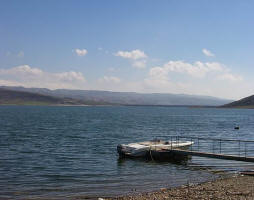 Ten principles of climate change communication
Ten principles of climate change communication
Successful communication of climate change needs to be tangible, relevant and tailored to its audience, according to new research. The study established 10 key principles for effective communication using a brainstorming exercise between scientists and local government.
For climate change policy to be effective, it must go hand-in-hand with good communication about climate change and its impacts. One of the most important links in the communication chain is between scientists and policy makers, including local government. In the USA the natural resource agencies are responsible for the protection of public land, such as national parks. They are also responsible for communicating issues around land management and the impacts of climate change.
The study summarised the findings from a three-day workshop on the challenges and opportunities associated with communicating the impacts of climate change on public lands in the western United States. 41 scientists and public land managers investigated methods on communicating climate change and its impacts to both visitors and stakeholders to ensure this important issue is addressed.
One of the biggest challenges to communication was that there were few local examples of climate change in the western United States. Lack of concern and lack of responsibility were also major barriers. From the debate and brainstorm a number of insights on communication emerged. For example, 'doom and gloom' messages can raise awareness but can also discourage people from taking action. To provoke preventative and adaptive action, climate change must be linked to values, beliefs and attitudes.
The participants identified nine key messages from the brainstorming session about climate change that they wished to communicate, ranging from 'Human choices have an impact on climate change' to 'Addressing climate change will require a combination of actions at multiple scales'. After considering the specific audiences they wanted to target, they developed 10 key communication strategies:
Know your audience and select a believable messenger for that audience
Know why your message is appropriate for your audience
Connect your message to cultural values and beliefs
Make the message meaningful by appealing to values that are meaningful to your audience
Make the message empowering with specific actions so your audience feel they can make a difference
Encourage your audience to think about the relationships and connections between climate, resources and themselves
Partner with other organisations
Start from the inside and involve your organisation's leaders before communicating
Communicate about actions and use events as a mode of communication
Situate the issue in a specific location and place
Although the principles were developed in the context of land management, it was suggested they would be relevant for other situations.
| Contact information |
Source: Schweizer, S., Thompson, J.L., Teel, T. & Bruyere, B. (2009). Strategies for Communicating about Climate Change Impacts on Public Lands. Science Communication. 31(2): 266-274.
(email: Schweizerses@yahoo.com ) |
|---|---|
| News type | Inbrief |
| File link | n/a |
| Source of information | 'Science for Environment Policy', issue 184: A service from the European Commission |
| Keyword(s) | Climate change and energy, Environmental information services |
| Subject(s) | ENERGY , METHTODOLOGY - STATISTICS - DECISION AID , RISKS AND CLIMATOLOGY |
| Relation | http://www.semide.org/topics/climatechange |
| Geographical coverage | International |
| News date | 12/02/2010 |
| Working language(s) | ENGLISH |
 you are not logged in
you are not logged in





